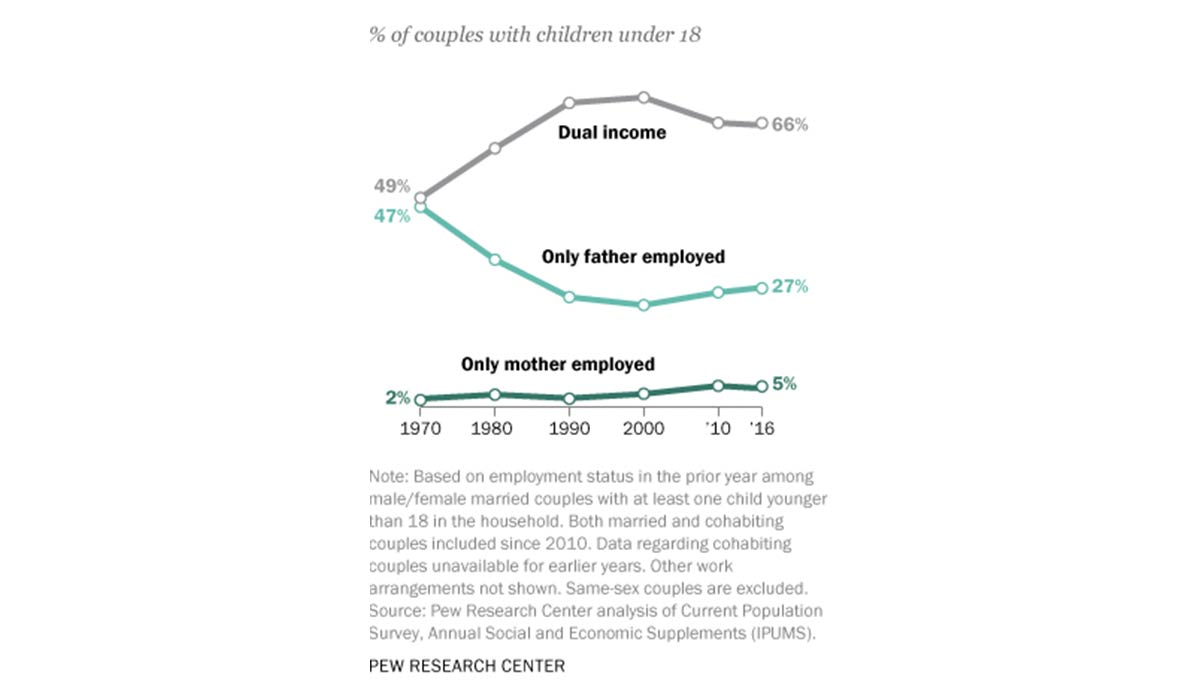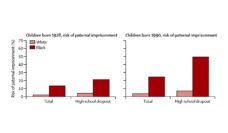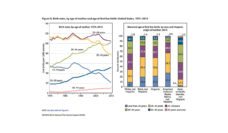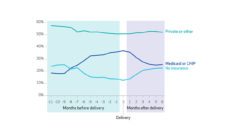As definitions and expectations of genders continue to evolve, so do family, work, and home lives. Earlier this year, the Pew Research Center examined changes in American parenthood in terms of employment, participation in household duties, and opinions on parent roles over the past half-century. The findings on fatherhood indicate a rise in stay-at-home fathers and single fathers over the past few decades. The time dads spend on child care has increased from 2.5 in 1965 to 8 hours per week in 2016, compared to moms at 10 to 14 hours per week. Paid work for dads has decreased from 46 to 43 hours per week.
Although these changes are small, especially considering the 50-year timeline, the research suggests a substantial drop in families in which fathers are the only employed adult. As of 2016, within heterosexual couples fathers alone worked in only 27% of families that had at least one child under 18 years; most families with children are dual income. The proportion of couples with mothers as the sole breadwinner rose very little since 1970.
Pew also found that 63% of dads in the United States believe they spend too little time caring for their children. Most adults who think it is ideal for one parent to stay home for child-rearing prefer that one parent to be the mother; 75% think that having more working women makes child-rearing more difficult. Gender roles have shifted over the past five decades, but women in the work force has remained steady for the last three.
Databyte via Kim Parker and Gretchen Livingston, 7 Facts about American Dads. Pew Research Center.













